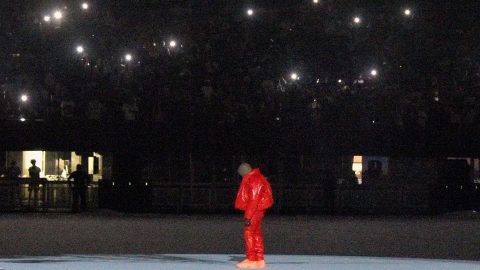
The Caligula Effect 2 might have passed you by. It’s the direct sequel to The Caligula Effect which was released in 2017 exclusively on the PlayStation Vita.
When the original game launched, I was intrigued. It had a clean anime visual aesthetic and a battle system with some fun potential. However, it didn’t run the best on the handheld and it was mired with a poor cast of characters and a lukewarm story.
An enhanced port of the game, The Caligula Effect: Overdose launched in 2019, attempting to remedy some of the problems by adding some new characters and storylines, while also overhauling the battle system and having it run on much better hardware as well. That title came to PC, PlayStation 4, and Nintendo Switch.
The Caligula Effect 2 sticks with core mechanics, including mostly the battle system. But it also has some improvements over the first game, such as its story and cast of characters, even though it still falls a bit short in some other areas.
The Caligula Effect 2 takes place in a place called Redo, which is a virtual world overseen by a virtuadoll named Regret. Its inhabitants live a carefree life in a virtual high school utopia free from any painful memories from their real lives. The silent protagonist meets χ, a virtuadoll whose plans are to destroy Redo and take down Regret. Upon the protagonist’s memories of the real world returning to them, they both team up to recruit other fellow schoolmates to join their cause of going back home to reality.
While the story premise of returning back to the real world is largely the same as it was in the first game, it has some interesting twists especially towards the end. It also has a much better cast to support it. Each character’s motivations and backstories can be explored through Character Episodes, which are reminiscent of Persona’s Social Links/Confidants mechanic. There are themes of gender identity, aging, ableism, and childhood trauma that are explored through these episodes. You’ll learn about the source of their real life unhappiness that drew them to Redo in the first place.
As a result, the characters are much more interesting and have more depth, especially compared to the first game’s, which were generally forgettable. What also helps is that the primary villains (The Obbligato Musicians) are more memorable too. Musicians were in the first game as well, but this new round of adversaries has better character development throughout the story.
Where the Character Episodes miss the mark is that they can be mostly ignored if one chooses to just follow the main story. Each Character Episode doesn’t reward players with any tangible gameplay benefits until the very last one, where the specific character learns a new attack. Besides learning more about the characters, If there were more rewards spread out throughout the episodes, just like how Persona’s Social Links/Confidants operate, then there would be much more of an incentive to experience them.
The battle system is almost unchanged from Overdose’s iteration of its mixed turn-based and real-time combat. Four party members are allowed to fight at a time, and players must pick four commands to chain together, such as an attacking skill or supporting skill. A preview of how the attacks will connect with each other will appear, like seeing an enemy pop up in the air and then your teammate following up with an aerial skill. It’s quite a unique approach for a battle system and it helps the game stand out.

While this can invite some creative and flashy combos, I found that it still resulted in the same problems that the first game’s battles had. It’s far too meticulous to try and plan out your moves during the preview considering how long battles take and how many enemies there are in dungeons. Also, the enemy variety is still fairly disappointing, mostly just consisting of humanoid looking creatures.
It was much simpler to just dive in head-on and turn on the auto-battle feature to let the AI control my teammates. It got the job done for normal encounters and I only decided to directly control my party during boss battles to make sure I could win.
The Causality Link feature is back too. It’s similar to something like Final Fantasy X’s Sphere Grid, where it’s a web connecting the friendships of various non-playable characters (NPCs) together. All across Redo, you can speak with NPCs to learn a bit more about them and also accept side quests from some of them. However, the side quests are mostly just fetch quests, requiring you to look for certain materials and items.
In the first game, you could actually recruit NPCs to join your party, but none of them were worth investing in since your main party members were stronger anyway and they had generic faces. Thankfully, this part has been entirely done away with here. The Causality Link has improved a bit, but the sheer number of characters available to speak with is still overwhelming, and many of them don’t have all that much interesting or insightful to say.

As for The Caligula Effect 2’s presentation, besides a few framerate hiccups when loading up a new area, it runs great. The original version of the first game was shackled to the PlayStation Vita’s hardware, and so the character models’ mouths didn’t move whenever dialogue was being spoken, and that part unfortunately carried over to the enhanced Overdose port as well.
But this time around, the characters’ mouths move when they talk, along with the general graphics looking much better. The 3D character animations are smooth during battle, although they can still look a bit stiff outside of fights.
When viewing Character Episodes, the improved power from recent consoles allows for NPCs to appear in the background. In the first game, for example, if the episode took place in the city, then only the main characters would be present on screen. There were no NPCs present (even in Overdose) and it made the backdrop settings look creepily barren.
On the other hand, the 2D artwork of the characters is very crisp and clean, and the minimalist menu aesthetic is nice to look at, similarly to a series such as Atelier. Furthermore, the characters in the first game had a strange ghostly pale white hue over them, but the cast here is more colorful, literally. That alone makes the characters appear much more lively in comparison.

The game also boasts a fantastic soundtrack, filled to the brim with catchy Japanese power pop tunes and vocaloid singing. The Japanese voice actors for χ and Regret actually provide the singing vocals for the songs that are played throughout, which is a nice world-building touch.
One disappointment with The Caligula Effect 2 is that there isn’t an English voice track option; only Japanese voice acting is available. There is also some banter the main characters engage in during battle that don’t have accompanying subtitles, so if you don’t understand Japanese, then you could lose some immersion.
The Caligula Effect 2 launches on PlayStation 4 and Nintendo Switch on October 19 in North America and October 22 in Europe. We reviewed the PlayStation 4 version on PlayStation 5 via backwards compatibility.
The Verdict
The Caligula Effect 2 is an improvement on its predecessor, most notably regarding the narrative and cast. However, it still has some kinks to iron out with the battle system and side quest structure. If a third game ever happens, and developer Aquaria can keep up the improved storytelling and characters while also continuing to polish its weaker areas, it has the potential to become a JRPG worthy of being recommended along with other titanic peers in the genre.
Pros
- The soundtrack and 2D character art style are great
- Improved narrative and great cast of characters, both allies and villains
- Technical performance is solid
Cons
- The battle system gets repetitive quickly
- 3D graphics, while improved, still look a little low budget
- Side quests and NPCs are still largely forgettable
The post ‘The Caligula Effect 2’ review: redo it all over again appeared first on NME.










